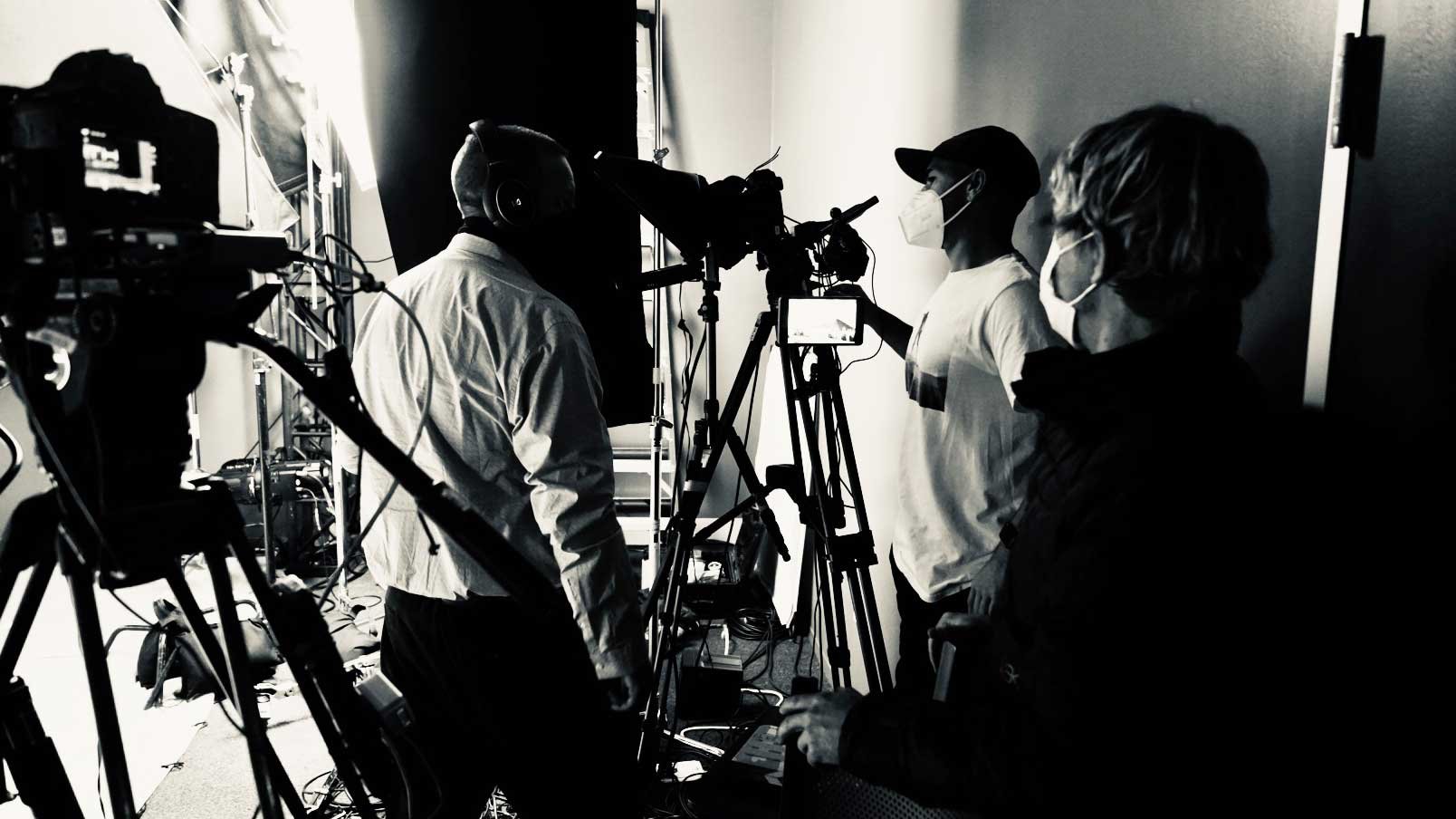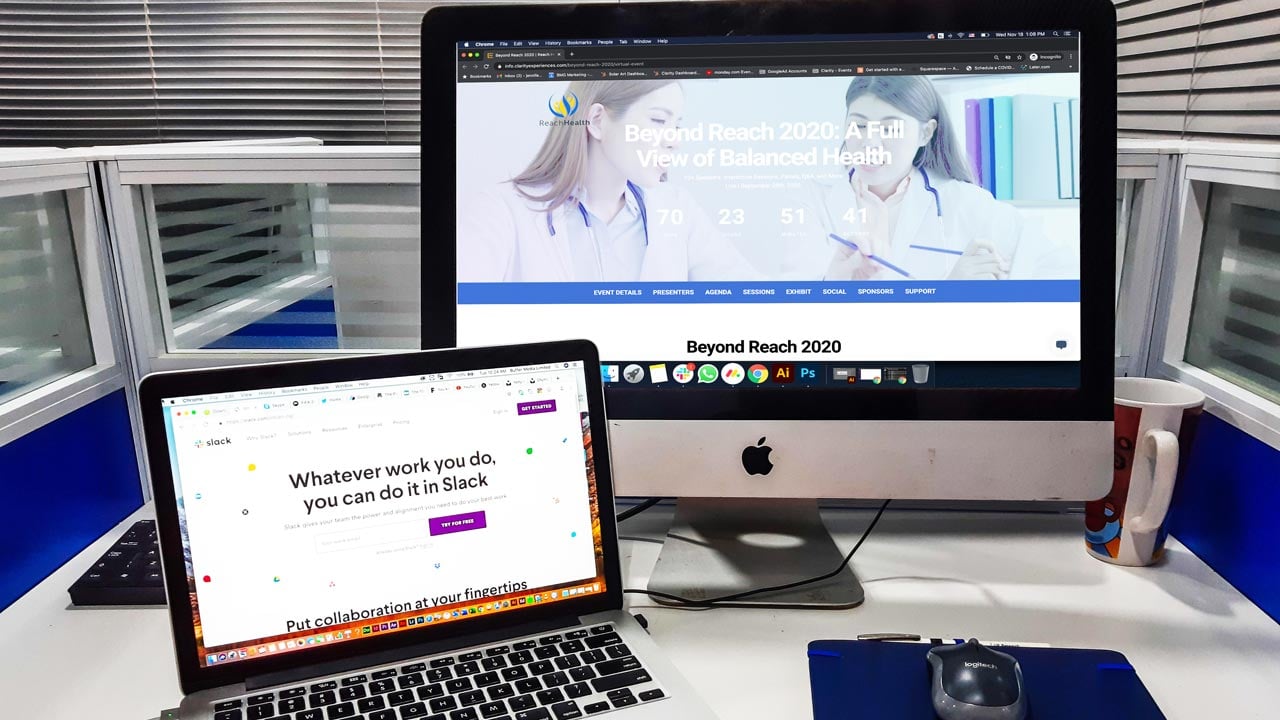Importance of Communication in Virtual Events
Audio Visual AV Services Event Industry Nov 18, 2020 Gary Lagestee

Clarity's Help Desk For Virtual Events

When you think back to the days of live events, what are some things you think of? I know for me I think about the high energy and the rush of adrenaline you get when the event is about to start. I also think about all of the moving parts, the teamwork, and the communication it takes to put it all together and make it truly remarkable. Now, if I asked you to think about some things you think of when it comes to virtual events, would you think of the same things? If your answer is no, then you might be going about virtual events all wrong. Virtual events should have a solid energy level and the same amount of teamwork and communication, if not more, than what you see in live events. Having a thorough back-end communication plan in virtual events is critical. It’s also something that isn’t talked about a lot and needs to be. There needs to be a communication plan between vendors, customers, and presenters to make sure everyone is on the same page and the event goes off without a hitch. So, do you have a solid communication plan for your 2021 virtual events? If not, keep on reading to learn some of Clarity’s tips on the subject and why we think it’s so important!
Why is having a communication plan important in virtual events?
The primary reason for having a stacked communication plan for virtual events is because everyone is in all different locations. In live events, everyone is in the same place or the same room. But, with virtual events, it’s quite the opposite. Most people like your production team, meetings team, end customer, and presenters are in different locations during the event, and in some cases they are even in different countries. A communication plan is a key component in what ties everyone together to increase the odds of a successful event. When you have a communication plan you can also quickly troubleshoot any issues that come up. If you have a communication plan created and put in place before the event, you can handle any issues that might pop up. All you planners out there know that there are not many things worse than an issue coming up and no one knows who or how to fix it and you just stare around looking at each other. That not only creates an absurd amount of stress, but it’s also not a professional look. Having a communication plan in order is an easy way to make sure everyone is on the same page and there is a plan in case something does come up.
What are the defining roles and responsibilities in a communication plan?
Just like with live events or any event in general, virtual events all vary in size. The size of your event team can vary based on the needs and size of the event, which means the defining roles and responsibilities in a communication plan are going to be different for each virtual event. Some virtual events have just a couple of partners working together, and some large events may have up to half a dozen different partners working together, depending on the size of the event. Regardless of the size of your virtual event, the first step to creating a robust communication plan is defining the roles and responsibilities, while also understanding the service models of each partner. Common roles include the production team, meeting planners, end client contacts, platform contacts, and presenters.
One question to consider as the meeting planner when considering partners is, does this partner have a service model to support the work or will it fall on the planner’s lap? You want to be sure you choose a partner that has the team and the tools to support you, so it doesn’t just end up on your plate. If you choose a partner that has the manpower to back you up, you’re golden!
Who needs to be communicating?
.png?width=300&name=Clarity%20communication%20plan%20(1).png) If you haven’t caught my drift yet, there is a lot of communication that needs to be going on at all points of a virtual event that includes all members involved. Below, we are going to dive into a few of the different communication plan combinations that need to be put in place for your virtual event.
If you haven’t caught my drift yet, there is a lot of communication that needs to be going on at all points of a virtual event that includes all members involved. Below, we are going to dive into a few of the different communication plan combinations that need to be put in place for your virtual event.
- There needs to be a communication plan from the production team to presenters and from the presenters to the production team. This combination needs to have two-way communication or it isn’t going to work. These two parties need to be on the same page at all times, but especially when it comes to live stream sessions. The live stream sessions are where these two groups of people work closely together and they need to be in sync to make sure it goes smoothly.
- The second combination of teams that needs to have a communication plan in place is the production team to the meeting planners and the meeting planners to the production team. Again, this needs to be two-way. Any changes on the fly to the agenda, show flow, or the presenters, are going to come from this combination of people, so they definitely need to be on the same page. They also are going to be the ones handling the live feedback during the event in case any adjustments are needed. In this communication channel, there is also back channel communication. Back channel communication is a critical piece in the communication plan because it’s a way to talk to presenters without it being broadcasted on the live stream. This is most important when doing live stream sessions and can be a solution to cross talk or presenter talk that may accidentally go live. Another way to do this is to use a separate tool outside of the software being used to stream.
- The third channel is from the meeting planner to all attendees and is one directional. In a virtual event, this communication plan comes into play if there is a power outage or platform outage. Technical challenges like this don’t happen too often, but if they do, it’s good to have a safety net and be prepared and know how to communicate to all of your attendees. You will use this communication channel to provide real time updates to attendees so that they are informed on what to do or when the meeting/conference will resume. In some cases, this communication plan includes having a back-up stream going on another platform, in which case the communication to attendees would provide them with a link for the meeting to continue. Like I said, you might not even use this communication channel at all, which is great, but you’ll regret not having it in place if you do need it!
- There also needs to be a communication plan from tech support to the attendees and from the attendees to tech support. Again, a two-way street. You will see this communication applied in a help desk scenario if attendees are experiencing difficulties including:
- Getting on the platform
- Troubleshooting issues
- Trouble getting the camera/microphone working
- Registration issues
If attendees are experiencing any of these issues, they have an easy way to reach out for technical assistance. You might also see generic FAQ about the event like getting these on demand or getting credits, which is another place this communication plan would come into play.
Communication tools

In creating a communication plan, you will also need communication tools, and having the right communication tools in place for virtual events is key. Clarity suggests using Microsoft Teams and Slack as channels for the production team, the general session crew and the client, and one for the breakout crew and the client. This gives the client their own internal channel for communicating, which is awesome. Communication tools allow you to weed out some of the noise to make the conversation organized and directed to the correct person on the team.
When it comes to communication tools, it’s also important to have someone who manages all the different channels to make sure people are on top of their correspondence, which ultimately allows many people to participate in assigned channels. One of the most important reasons to have the correct communication tools is for group chat capabilities. You want group chat capabilities outside of the platform the event is being hosted on, just in case if something goes down, you’re covered. At the end of the day, these channels allow you to know who to talk to about what from the client’s side, which is very useful since you are sometimes working with 20 people doing various things To put it simply, these channels create your who’s who, and that’s why they are so important to have in a virtual event.
That's Why Having A Communication Plan Is So Important In Virtual Events!
There you go! A few of the biggest reasons why having a communication plan is so important in virtual events. Just because a virtual event isn’t a live event, doesn’t mean it should be treated any differently. The communication plan is the part of the puzzle that keeps everyone on track and makes sure the virtual event is remarkable! If you don’t have a communication plan in place for your 2021 virtual events, or would like to learn more about them, drop us a line or schedule a meeting, we would love to work with you!
